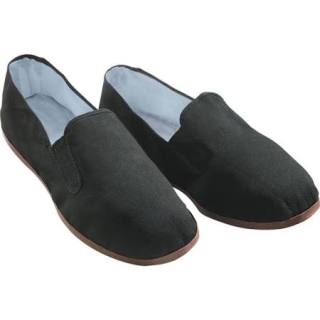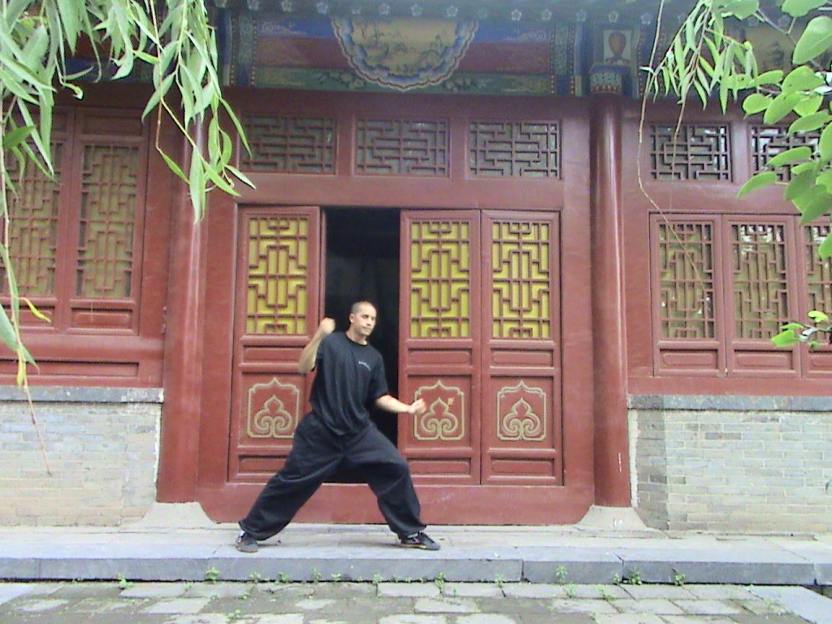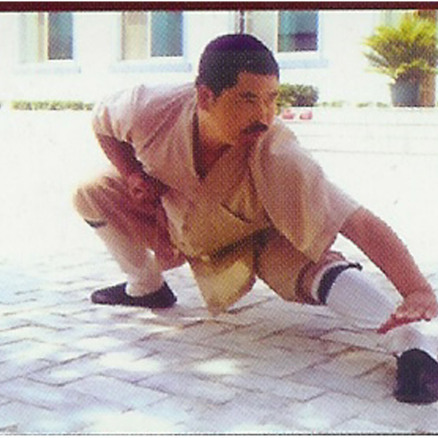By now you have probably heard of, or are vaguely familiar with, Bruce Lee. If not, stop reading right now and do yourself a tremendous solid. Visit: https://brucelee.com/bruce-lee
Anyways… Back in 1978, Bruce Lee dropped the ‘Game of Death’. That’s when, in my opinion, the martial arts shoe game officially began. Bruce introduced to the world the now iconic custom pair of unforgettable yellow Asics fencing shoes that were as effective as they were ostentatious. His opposite in the film, Ji Han Jae – Hapkido Master, was sporting a white pair with red and blue stripes. Quentin Tarantino would go on to pay homage to Bruce Lee’s iconic yellow jumpsuit and shoes with Beatrix Kiddo (Uma Thurman) in Kill Bill 1.

Why did Bruce Lee choose this shoe to best represent portray the fighting in film as well as off screen? Perhaps taking a look at the past can lead to some solid theories to why.
For the most part, kung fu practitioners had limited options at the time. “China Flats” were widely the most available and iconic themselves with an, “as seen on TV” appeal. As someone who has tried to train in the different variations of them, they are completely unstable. With cotton or hard plastic soles, any type of aggressive movement and they were off your feet. Good for tai-chi though.



Today’s traditional and contemporary practitioners are more agile, more mobile, and versatile than ever before. Thus the need for proper foot support is essential in training. I can’t speak for Bruce Lee but what I gather while reading the Tao of Jeet Kune Do, is that he had this in mind in developing a new philosophy for the modern artist. Having picked up different techniques from fencing, western boxing, judo, jiu jitsu, and savate, it became evident that a new shoe would be needed to perform the techniques outlined in his teachings, particularly mobility. Fencing being the most influential in his footwork, the Asics fencing shoe was well suited for it.



Having practiced the footwork in Jeet Kune Do, the Asics Mexico 66’s are light and airy while providing the grip needed for the swift and nimble front-to-back, and side-to-side bouncy movement JKD requires for efficiency.
While it’s up for the debate whether or not Bruce Lee wore an exact pair or early prototype for the Onitsuka Tiger Mexico 66, he did where Asics both on and off screen as did his cohorts. The Japanese brand made a home designing soccer and various olympic sport shoes. The Onitsuka Tiger brand, Asics predecessor, has its own unique beginnings promoting youth health and to this day still makes a solid martial arts shoe.

Another very popular shoe for martial arts, particularly wushu and kung fu, is by a Chinese brand based out of Shanghai – Feiyue. In my opinion, Feiyue is the supreme option for practicing kung fu. It’s durable canvas body can handle the demands of countless training sessions. The flexible rubber sole moves in unison with the foot and most importantly they’re extremely light weight. (The French counterparts are noticeably heavier and not designed for training).

I’ve trained in Feiyue shoes for over 15 years and still recommend for most traditional martial arts practitioners. They’re durable, light, breathable, and competitively priced for people of all levels of experience.


Nike had a rare release kung fu shoe called, Shaolinquan (which is the name for Shaolin Kung Fu better known as Shaolin Fist). They were released for the 2008 Beijing Olympics for Wushu competitors. As quickly as the Olympics died down, so did the Nike Shaolinquan sneakers.
By the looks of it, the Shaolinquan has a specific practitioner in mind, the wushu artist for an olympic floor performance. The rounded sole makes for an easy drop and rise up from a seated or grounded position but with an all leather upper might make them unbreathable and can suffocate your feet, especially during training and long forms. A show or testing shoe at best. Nike may own the highest quality in regards to technology and material used, but if you do a search you can find numerous options inspired by the look and style of the Shaolinquan from other brands. Google #wushu.
The list of martial arts shoes is endless these days. In selecting a shoe for training, one must be aware of their particular style and training methods that will be encountered learning the particular martial art. Like all sports, quality of material and functionality are key and must meet what the martial art style demands. Stick with the basics: durability, breathability, and flexibility just as what I feel Bruce Lee had in mind. Flexing a little on the looks of the shoe is where one’s personality is expressed, but should be an afterthought for serious practitioners.
Originally posted June 29, 2017. Revised Jan. 25, 2021.











